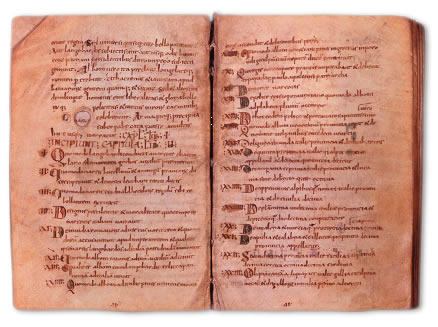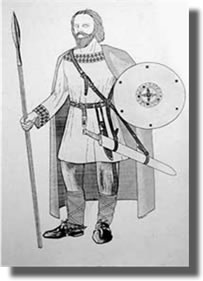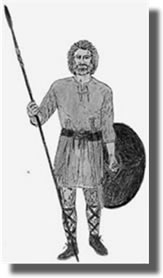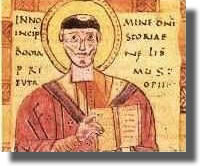Scientific Area » Longobard Culture » legends and First Historical Quotes
« Back
LEGENDS AND FIRST HISTORICAL QUOTES
|
“ .... and at the present time these latter (the Germanic tribes at the mouth of the Albis, the Longobards) have been driven in flight out of their country into the land on the far side of the River. It is a common characteristic of all the peoples in this part of the world that they migrate with ease, because of the meagerness of their livelihood and because they do not till the soil or even store up food, but live in small huts that are merely temporary structures; and they live for the most part off their flocks, as the Nomads do, so that they load their household belongings on their wagons and with their beasts turn whithersoever they think best. (STRABO, Geographica, Book VII, 1.3.291)
With these words historian Strabo describes the characteristics of the peoples met during the campaigns of Tiberius and Augustus who, at the beginning of the imperial age, drove back the Germans across the Rhine and the Elbe; they included the original dispersed tribes of the Longobards who lived in those times at the mouth of the Elbe in the great kingdom of the Sueves.

Historia Langobardorum
Museo Archeologico Nazionale
Cividale del Friuli
These tribes were standing out as an independent and cohesive Germanic group who dominated the others, although outnumbered, thanks to a number of battles and victories in the field such as that of I century in Scoringia, which enabled them to win the Vandals and stop their expansion west of the Oder river, and contributed to strengthening the tribes of the Winnili from then on called Longobards.


It was the dawning of that process clearly described by Paul the Deacon in his Historia Langobardorum (I, 7-10) which concerned the gathering of many Germanic gentes as well as the consolidation of tribes due to the recognition of an ethnic community with a single identity - and a single specific name - thanks to both a shared myth of origins and an epic saga of leaders who led to the tradition of a royal genealogy.
Under the guidance of such military leaders and in search of a better livelihood these gentes moved, battle by battle, to conquer new lands.
Although they were not actually nomadic tribes, the Germans - the Longobards included – continuously migrated to new, safer and richer lands, which was a distinguishing mark of their existence, living off cattle-breeding and handicraft production; agriculture was limited by their constant movements, which affected not only their dwelling style but also their social structure hinged on warrior tribes.
In such a system developing outside the boundaries of the Roman Empire – as it was mentioned above, at first alongside it, then conflicting with it to the point that it contributed to causing its end – the vicissitudes of the Longobards were an example of semi-nomadic tribes transmigrating who first gave rise to a gens – that is a social community with shared cultural marks – and then became a people or a nation deeply rooted in an area with the need to create stable forms of government in the conquered lands. Thus, in the early period the Longobards migrated from the Baltic islands to the South and then, after coming into contact with the (Roman) Byzantine Empire and its lifestyle and forms of power, conquered Pannonia and lastly settled in Italy, where they gave rise to the Longobard Kingdom and their conquest period came to an end.
« Back



